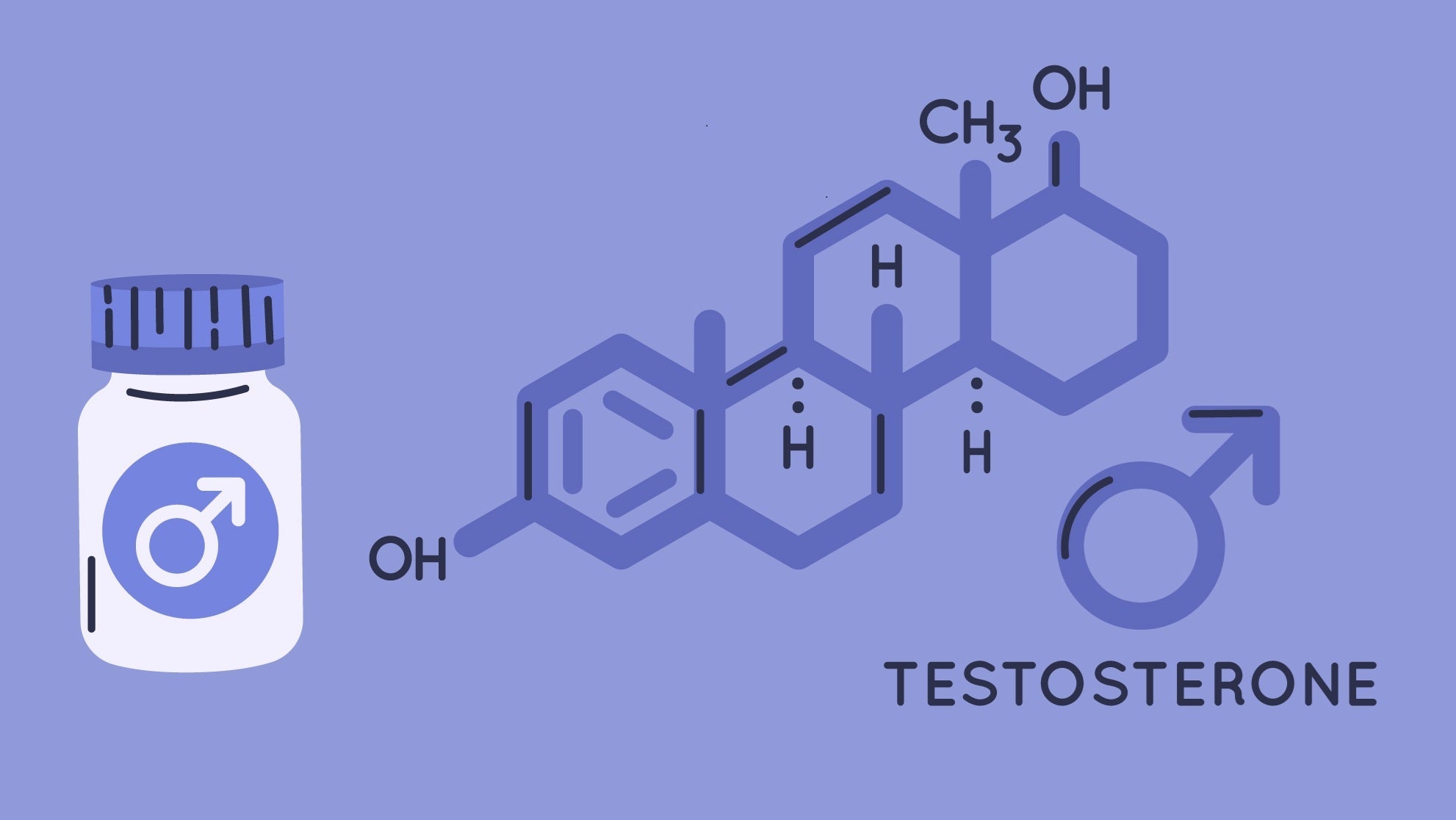
Key Takeaways
- Sexual function improvements typically appear within 2-4 weeks, with peak effects at 3-6 months
- Mood and energy changes often begin within 1-3 weeks of starting testosterone therapy
- Muscle mass and strength gains become noticeable after 3-6 months, with continued improvements up to 12-18 months
- Body composition changes (fat reduction) typically occur over 6-12 months of consistent therapy
- Individual factors like age, baseline testosterone levels, and delivery method significantly influence how long testosterone takes to work
- Regular monitoring is essential for safety and optimal effectiveness throughout treatment
Introduction: Understanding Testosterone Therapy and Its Timeline
Testosterone replacement therapy (TRT) has emerged as a critical treatment modality for men experiencing clinically significant testosterone deficiency. As the prevalence of diagnosed hypogonadism continues to rise—affecting an estimated 2-6% of men globally according to recent endocrinological studies—understanding the therapeutic timeline becomes paramount for both patients and healthcare providers¹.
The question of how long does testosterone take to work represents more than mere curiosity; it fundamentally impacts treatment adherence, expectation management, and clinical outcomes. Research demonstrates that patients with realistic timeline expectations show significantly higher therapy compliance rates and improved quality of life measures compared to those with unrealistic expectations².
This comprehensive analysis examines the evidence-based timelines for testosterone therapy effects, drawing from peer-reviewed clinical trials, endocrinological guidelines, and longitudinal patient studies. We'll explore the multifaceted nature of testosterone's physiological impact, from rapid-onset effects on mood and libido to longer-term changes in body composition and bone density.
Basics of Testosterone Therapy
Testosterone serves as the primary male sex hormone, orchestrating numerous physiological processes beyond reproductive function. This steroid hormone regulates muscle protein synthesis, bone mineralization, erythropoiesis, mood regulation, and metabolic processes including fat distribution and insulin sensitivity³.
Clinical indications for testosterone therapy primarily include primary and secondary hypogonadism, where men present with serum testosterone levels below 300 ng/dL (10.4 nmol/L) accompanied by symptomatic manifestations. The American Urological Association guidelines also recognize age-related testosterone decline as a potential therapeutic indication when symptoms significantly impact quality of life⁴.
Modern testosterone delivery systems offer varying pharmacokinetic profiles that directly influence how long it takes for testosterone to work:
Intramuscular injections (testosterone cypionate, enanthate): Provide rapid initial absorption with sustained release over 7-14 days • Transdermal gels and creams: Offer steady-state levels with daily application, reaching peak absorption within 2-4 hours • Subcutaneous pellets: Deliver consistent hormone levels for 3-6 months following implantation • Buccal tablets: Provide twice-daily dosing with rapid mucosal absorption
The choice of delivery method significantly impacts both the onset timeline and the pattern of symptom improvement, with injectable forms typically showing faster initial effects compared to transdermal preparations.
General Timeline Overview of Testosterone Effects
Understanding how long does testosterone take to work requires examining the diverse physiological systems it influences. Clinical research demonstrates a hierarchical pattern of effect onset, with some benefits appearing within days while others require months to manifest fully.
|
Effect Category |
Initial Onset |
Peak Benefit |
Stabilization |
|
Sexual Function |
2-4 weeks |
3-6 months |
6-12 months |
|
Mood/Energy |
1-3 weeks |
6-12 weeks |
3-6 months |
|
Muscle Mass |
6-12 weeks |
6-18 months |
12-24 months |
|
Fat Reduction |
12-16 weeks |
9-12 months |
12-18 months |
|
Bone Density |
6 months |
12-24 months |
24+ months |
|
Hematocrit |
2-6 weeks |
3-9 months |
9-12 months |
Individual variability significantly influences these timelines. Factors such as baseline testosterone levels, age, concurrent medical conditions, and genetic polymorphisms affecting androgen receptor sensitivity can accelerate or delay therapeutic responses. Men with severely suppressed baseline testosterone levels often experience more rapid initial improvements, while those with borderline deficiency may require extended treatment periods to achieve optimal benefits⁵.
Additionally, the specific formulation and dosing regimen substantially impact how long does it take for testosterone to work. Higher initial doses may accelerate onset but increase the risk of adverse effects, while conservative dosing approaches prioritize safety over rapid symptom resolution.
Detailed Timeline of Testosterone Effects
Sexual Function and Libido
Sexual symptoms represent the most commonly reported benefits and typically demonstrate the earliest response to testosterone therapy. Clinical trials consistently show that libido improvements begin within 2-4 weeks of treatment initiation, with 70-80% of men experiencing noticeable enhancement by the 6-week mark⁶.
Erectile function follows a slightly delayed timeline compared to libido. Phosphodiesterase-5 responsiveness improves progressively, with optimal effects typically achieved between 3-6 months of consistent therapy. The International Journal of Impotence Research published findings showing that men with testosterone-associated erectile dysfunction achieved maximum improvement scores at the 6-month evaluation point⁷.
Physiologically, testosterone enhances nitric oxide synthase activity and improves penile blood flow regulation. These vascular improvements require time for endothelial remodeling and smooth muscle function restoration, explaining the gradual progression of erectile function enhancement.
Mood and Cognitive Effects
Mood-related improvements often represent the earliest noticeable changes in testosterone therapy, with many men reporting enhanced well-being within 1-3 weeks of treatment initiation. This rapid onset reflects testosterone's direct influence on neurotransmitter systems, particularly dopamine and serotonin pathways⁸.
Depression scores, as measured by validated instruments like the Patient Health Questionnaire-9 (PHQ-9), typically show statistically significant improvement by 6-12 weeks. A meta-analysis of randomized controlled trials demonstrated that testosterone therapy reduced depression scores by an average of 4.2 points, with peak effects observed between 8-16 weeks⁹.
Cognitive effects, including improved concentration and mental clarity, generally manifest within 4-8 weeks. However, more complex cognitive functions such as spatial memory and executive function may require 3-6 months for optimal enhancement.
Energy and Vitality
Energy improvements closely parallel mood changes, with initial benefits typically emerging within 2-4 weeks. The physiological basis involves testosterone's role in mitochondrial function enhancement and improved cellular energy metabolism. Clinical studies demonstrate that fatigue scores improve progressively, with maximum benefit achieved by 12-16 weeks¹⁰.
Sleep quality improvements often contribute significantly to perceived energy enhancement. Testosterone therapy has been shown to reduce sleep fragmentation and improve deep sleep phases, with polysomnographic improvements detectable as early as 4-6 weeks into treatment.
Muscle Mass and Strength
For those wondering how long does testosterone take to work bodybuilding-wise, muscle-related changes follow a more extended timeline. Initial strength improvements may be noticed within 6-12 weeks, primarily due to neuromuscular adaptations and increased training motivation rather than actual hypertrophy.
Measurable muscle mass increases typically require 3-6 months to become apparent through body composition analysis. The rate of muscle protein synthesis increases within weeks of therapy initiation, but visible hypertrophy depends on adequate resistance training and nutritional support. Longitudinal studies show that lean body mass continues increasing for 12-18 months, with some men experiencing ongoing improvements beyond 24 months¹¹.
Strength gains generally precede visible muscle growth, with most men reporting improved lifting capacity within 8-12 weeks. Peak strength improvements typically occur between 6-12 months, coinciding with optimal muscle mass accumulation.
Fat Mass Reduction and Body Composition
Fat reduction represents one of the slower-responding aspects of testosterone therapy. Initial changes in body composition may not become apparent until 12-16 weeks of treatment, with optimal fat loss typically requiring 9-12 months of consistent therapy.
Visceral adipose tissue shows preferential reduction compared to subcutaneous fat, reflecting testosterone's influence on lipolytic enzyme activity and metabolic rate enhancement. DEXA scan studies demonstrate that men can expect 2-5% body fat reduction over 12 months, with continued improvements possible beyond the first year¹².
Bone Density Improvements
Bone density improvements require the longest timeline among testosterone therapy benefits. Initial changes in bone turnover markers become detectable within 3-6 months, but meaningful bone mineral density increases typically require 12-24 months to achieve statistical significance.
The process involves enhanced osteoblast activity and reduced osteoclast function, leading to net bone formation. Clinical guidelines recommend bone density monitoring at 12-24 month intervals due to the extended timeline required for meaningful changes¹³.
Other Physiological Effects
Erythropoiesis enhancement begins within 2-6 weeks, with hematocrit levels typically increasing progressively over 3-9 months. This effect requires careful monitoring due to potential polycythemia risks in susceptible individuals.
Cardiovascular markers show variable timelines, with some lipid parameters improving within 6-12 weeks while others may require extended treatment periods. Blood pressure effects remain controversial, with individual responses varying significantly based on baseline cardiovascular health.
Factors Influencing How Quickly Testosterone Works
Individual variability significantly impacts therapeutic timelines, making personalized expectation setting crucial for optimal treatment outcomes. Age represents a primary determinant, with younger men (20-40 years) typically experiencing faster onset and more pronounced effects compared to older patients (>60 years). This age-related difference reflects preserved androgen receptor sensitivity and better overall physiological responsiveness¹⁴.
Baseline testosterone levels inversely correlate with response speed—men with severely suppressed levels (<200 ng/dL) often show dramatic early improvements, while those with borderline deficiency may require extended treatment periods. Genetic factors, particularly androgen receptor gene polymorphisms, can influence both sensitivity and response magnitude.
Administration method significantly affects how long does it take for testosterone to work:
Injectable testosterone cypionate provides rapid initial effects within 48-72 hours but requires 4-6 weeks for steady-state achievement • Transdermal gels offer more gradual onset over 2-4 weeks with consistent daily application • Subcutaneous pellets provide the most stable levels but may require 4-8 weeks for optimal tissue saturation
Lifestyle factors substantially influence therapeutic effectiveness. Regular resistance training accelerates muscle-related benefits, while adequate protein intake (1.6-2.2 g/kg body weight) optimizes protein synthesis responses. Sleep quality directly impacts testosterone's natural circadian rhythm and treatment efficacy.
Concurrent medical conditions can delay or diminish therapeutic responses. Diabetes, obesity, and metabolic syndrome may require longer timelines due to insulin resistance and inflammatory processes that interfere with androgen signaling pathways.
Monitoring and Safety During Testosterone Therapy
Effective testosterone therapy requires systematic monitoring to ensure both safety and therapeutic efficacy. Clinical guidelines recommend comprehensive laboratory evaluation at baseline, 3-6 months, and then annually for stable patients¹⁵.
Essential monitoring parameters include:
- Total and free testosterone levels to confirm therapeutic range achievement (typically 400-800 ng/dL)
- Hematocrit monitoring due to erythropoiesis stimulation, with values >54% requiring intervention
- Prostate-specific antigen (PSA) screening for men >40 years, with increases >1.4 ng/mL/year warranting urological evaluation
- Liver function tests for oral testosterone preparations (rarely used currently)
- Lipid profiles to assess cardiovascular risk modifications
Red flag symptoms requiring immediate medical attention include chest pain, shortness of breath, leg swelling, or urinary symptoms. These may indicate serious complications such as polycythemia, cardiovascular events, or prostate issues.
Regular clinical evaluation should assess symptom improvement, medication adherence, and potential adverse effects. The timeline for these evaluations typically follows a 3-month initial assessment, followed by 6-month intervals once stable therapeutic levels are achieved.
Weighing Benefits and Risks: Understanding Both Sides of Testosterone Therapy Timelines
While understanding how long does testosterone take to work focuses primarily on benefits, responsible clinical practice requires acknowledging potential risks and their timelines. Cardiovascular risks remain controversial, with some studies suggesting increased risk within the first 90 days of therapy, particularly in men with pre-existing cardiovascular disease¹⁶.
Prostate-related concerns typically manifest gradually, making long-term monitoring essential. While testosterone therapy doesn't directly cause prostate cancer, it may accelerate existing malignancies. Regular PSA monitoring helps detect concerning changes early in the treatment timeline.
Expected benefits over time include:
- Improved quality of life scores within 8-12 weeks
- Enhanced sexual function by 3-6 months
- Increased muscle mass and strength over 6-18 months
- Better metabolic parameters by 12 months
Realistic expectation setting prevents disappointment and improves adherence. Men should understand that testosterone therapy represents a long-term commitment, with optimal benefits often requiring 6-12 months to fully manifest. Some effects, particularly bone density improvements, may take 1-2 years to achieve clinical significance.
Summary of Testosterone Therapy Timeline and Effects
The question of how long does testosterone take to work encompasses a spectrum of effects with varying timelines. Sexual function and mood improvements typically emerge within 2-4 weeks, representing the earliest therapeutic benefits. Energy and vitality enhancements follow closely, usually apparent within 3-6 weeks of treatment initiation.
More substantial changes, including muscle mass accumulation and body composition modifications, require extended timelines of 3-12 months. Bone density improvements represent the longest-term benefits, often requiring 12-24 months for meaningful changes.
Key timeline reminders:
- Sexual function: 2-4 weeks onset, peak at 3-6 months
- Mood and energy: 1-3 weeks onset, stabilization at 3-6 months
- Muscle mass: 6-12 weeks onset, continued gains for 12-18 months
- Fat reduction: 12-16 weeks onset, optimal results at 9-12 months
Success requires patience, adherence to prescribed regimens, and regular medical monitoring. Individual variability means that some men may experience faster or slower responses than average timelines suggest.
Frequently Asked Questions About Testosterone Therapy Timelines
Does testosterone work immediately after the first dose?
No, testosterone does not work immediately. While injectable forms may increase serum levels within 24-48 hours, symptomatic improvements typically require 1-4 weeks to become noticeable, depending on the specific effect being measured.
What is the difference in onset between injections and gels?
Injectable testosterone typically shows faster initial effects due to higher peak concentrations, with benefits often noticeable within 1-2 weeks. Transdermal gels provide more gradual onset over 2-4 weeks but offer more stable daily hormone levels once established.
Which symptoms improve fastest with testosterone therapy?
Mood and energy improvements typically appear first (1-3 weeks), followed by libido enhancement (2-4 weeks). Sexual function and strength improvements usually follow within 4-8 weeks, while muscle mass and body composition changes require several months.
How does the timeline differ between younger and older men?
Younger men (20-40 years) typically experience faster onset and more pronounced effects due to better androgen receptor sensitivity and overall health status. Older men (>60 years) may require extended timelines and may achieve more modest improvements, particularly in muscle mass and strength domains.
References
-
Bhasin S, et al. Testosterone therapy in men with hypogonadism: an Endocrine Society clinical practice guideline. J Clin Endocrinol Metab. 2018;103(5):1715-1744.
-
Khera M, et al. Adult-onset hypogonadism. Mayo Clin Proc. 2016;91(7):908-926.
-
Antonio L, et al. Effects of testosterone therapy on cognitive function: a systematic review. Eur J Endocrinol. 2020;183(2):R37-R50.
-
Mulhall JP, et al. Evaluation and management of testosterone deficiency: AUA guideline. J Urol. 2018;200(2):423-432.
-
Corona G, et al. Hypogonadism as a risk factor for cardiovascular mortality in men: a meta-analytic study. Eur J Endocrinol. 2011;165(5):687-701.
-
Isidori AM, et al. Effects of testosterone on sexual function in men: results of a meta‐analysis. Clin Endocrinol. 2005;63(4):381-394.
-
Shabsigh R, et al. Testosterone therapy in erectile dysfunction and hypogonadism. J Sex Med. 2005;2(6):785-792.
-
Zarrouf FA, et al. Testosterone and depression: systematic review and meta-analysis. J Psychiatr Pract. 2009;15(4):289-305.
-
Walther A, et al. Association between testosterone treatment and depressive symptoms in men: a systematic review and meta-analysis. JAMA Psychiatry. 2019;76(1):31-40.
-
Bassil N, et al. The benefits and risks of testosterone replacement therapy: a review. Ther Clin Risk Manag. 2009;5:427-448.
-
Bhasin S, et al. Effect of testosterone supplementation with and without a dual 5α-reductase inhibitor on fat-free mass in men with suppressed testosterone production. JAMA. 2012;307(9):931-939.
-
Frederiksen L, et al. Testosterone therapy decreases subcutaneous fat and adiponectin in aging men. Eur J Endocrinol. 2012;166(3):469-476.
-
Snyder PJ, et al. Effects of testosterone treatment in older men. N Engl J Med. 2016;374(7):611-624.
-
Huhtaniemi IT, et al. Late-onset hypogonadism: current concepts and controversies of pathogenesis, diagnosis and treatment. Asian J Androl. 2014;16(2):192-202.
-
Dohle GR, et al. EAU guidelines on male hypogonadism. Eur Urol. 2019;75(2):237-246.
-
Corona G, et al. Cardiovascular risk associated with testosterone-boosting medications: a systematic review and meta-analysis. Expert Opin Drug Saf. 2014;13(10):1327-1351.



Comentarios (0)
Regresar a Noticias